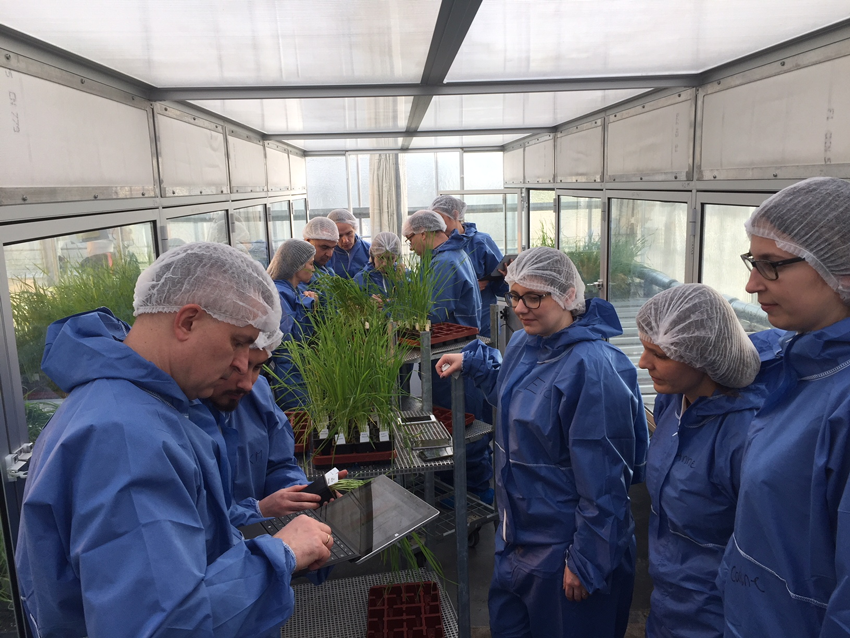Experts gather to share and align results of rust phenotyping at the Global Rust Reference Center
The training course was a part of the H2020 RustWatch work programme

Participants of the RustWatch project gathered at the GRRC at the end of February in the first step of aligning results from wheat rust virulence surveys across Europe. Survey leaders and research staff from nine countries met at the end of February 2019 to discuss results from the 2018 field season and how improvements might be made to enable a smooth comparison of results across countries.
The workshop initially focused on practical diagnosis of rust races, with emphasis on Puccinia striiformis f.sp. tritici, which causes wheat yellow or stripe rust and Puccinia graminis f.sp. tritici, which cause wheat stem rust. Participants were able to assess isolates of these pathogens from both their own programmes and from others, submitted to the Danish lab ahead of the workshop, and this was possible due to the high quality containment facilities at the Global Rust Reference Center.
Although participants were considered to be experts in the virulence surveys of the cereal rusts, this exercise allowed for constructive discussion about minor changes to current methods and designation of race names, which will ultimately enable a seamless comparison of results between laboratories.
In the latter part of the week, survey leaders presented recent findings from their own surveys and results were rigorously discussed. Some results were highlighted for further investigation and this work is now ongoing with the project partners.
Comparison of results arising from different molecular approaches also proved highly successful, generally resulting in the same conclusions concerning genetic variability and relationship among isolates irrespectively of methodology or lab. Analysis of these results along with a summary of the 2018 results will be reported in the coming weeks.
GRRC collaborate with rustlabs in four institutions in Europe, and all four labs share race and genetic rusults via the Wheat Rust Toolbox. The strong collaboration between the five labs in Europe is one major backbone in RustWatch
 |  |  |  | |
|---|---|---|---|---|